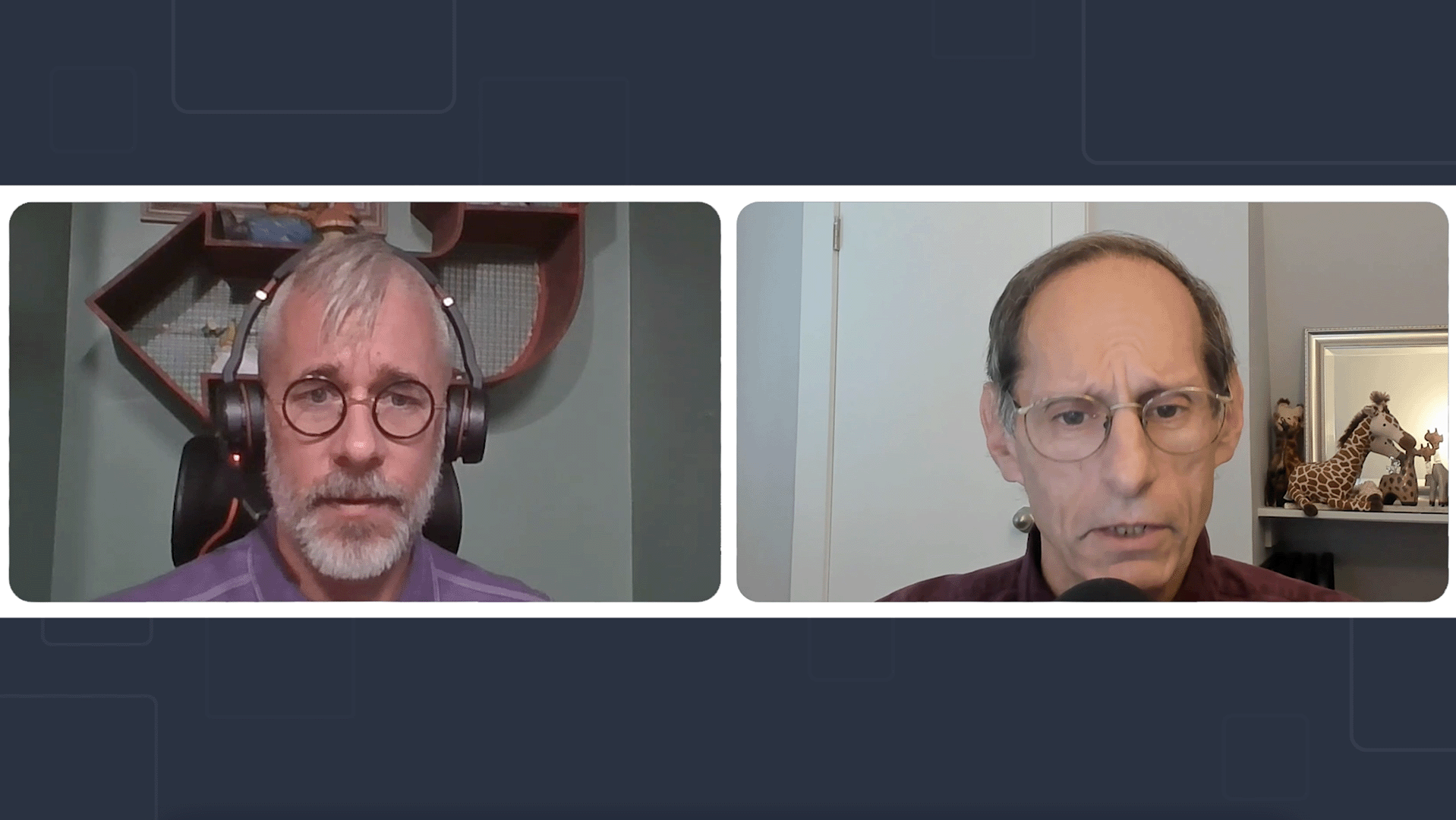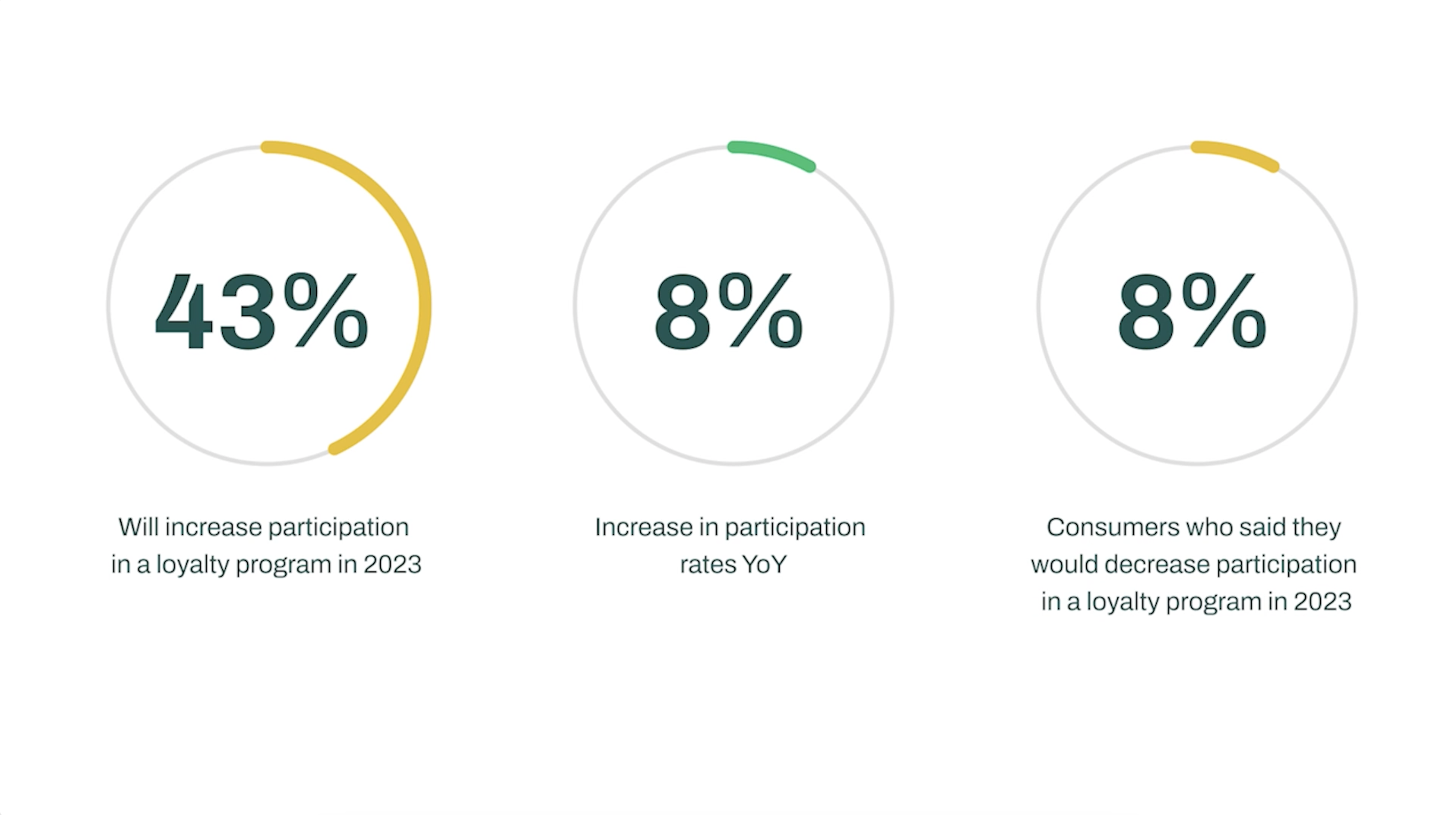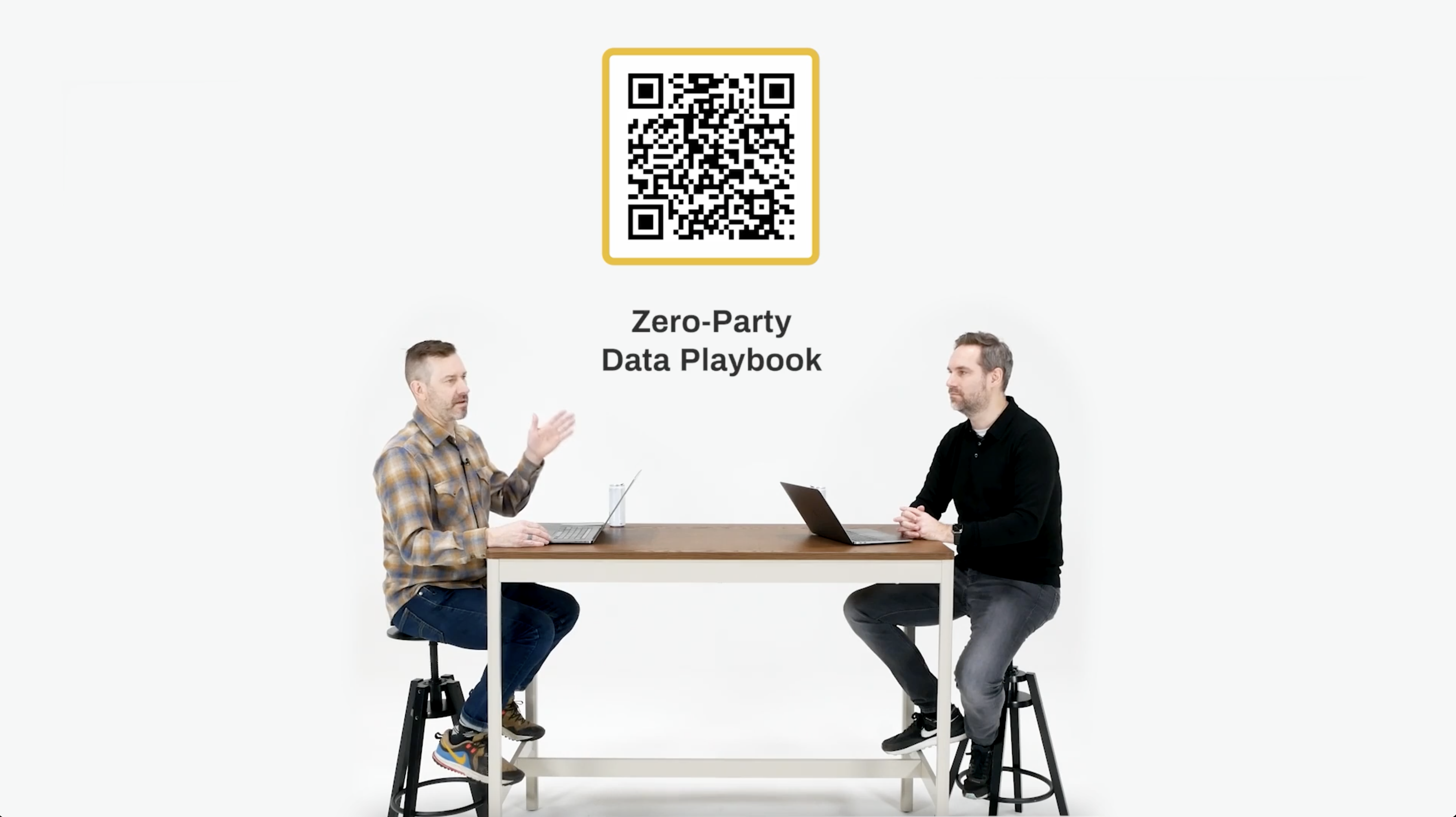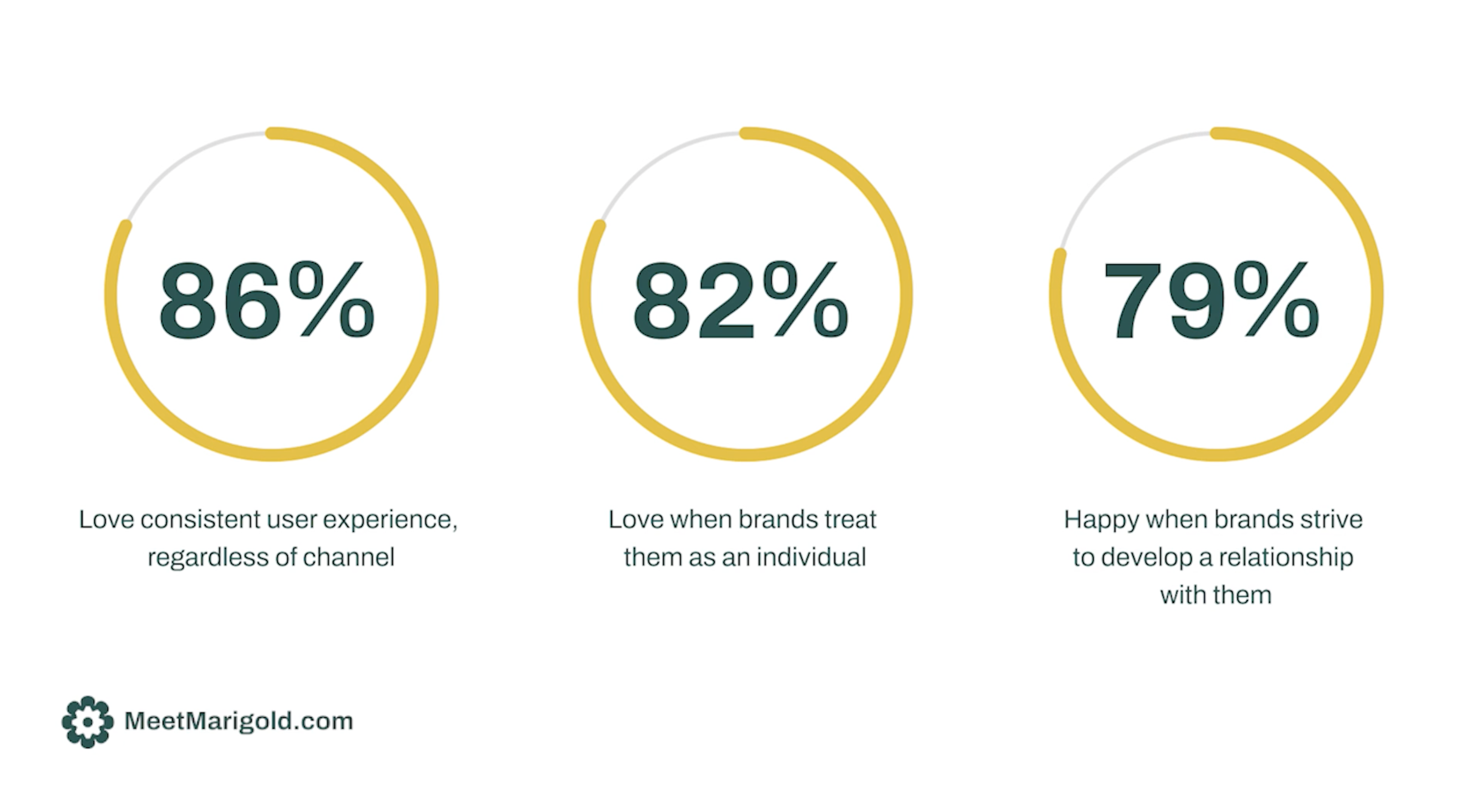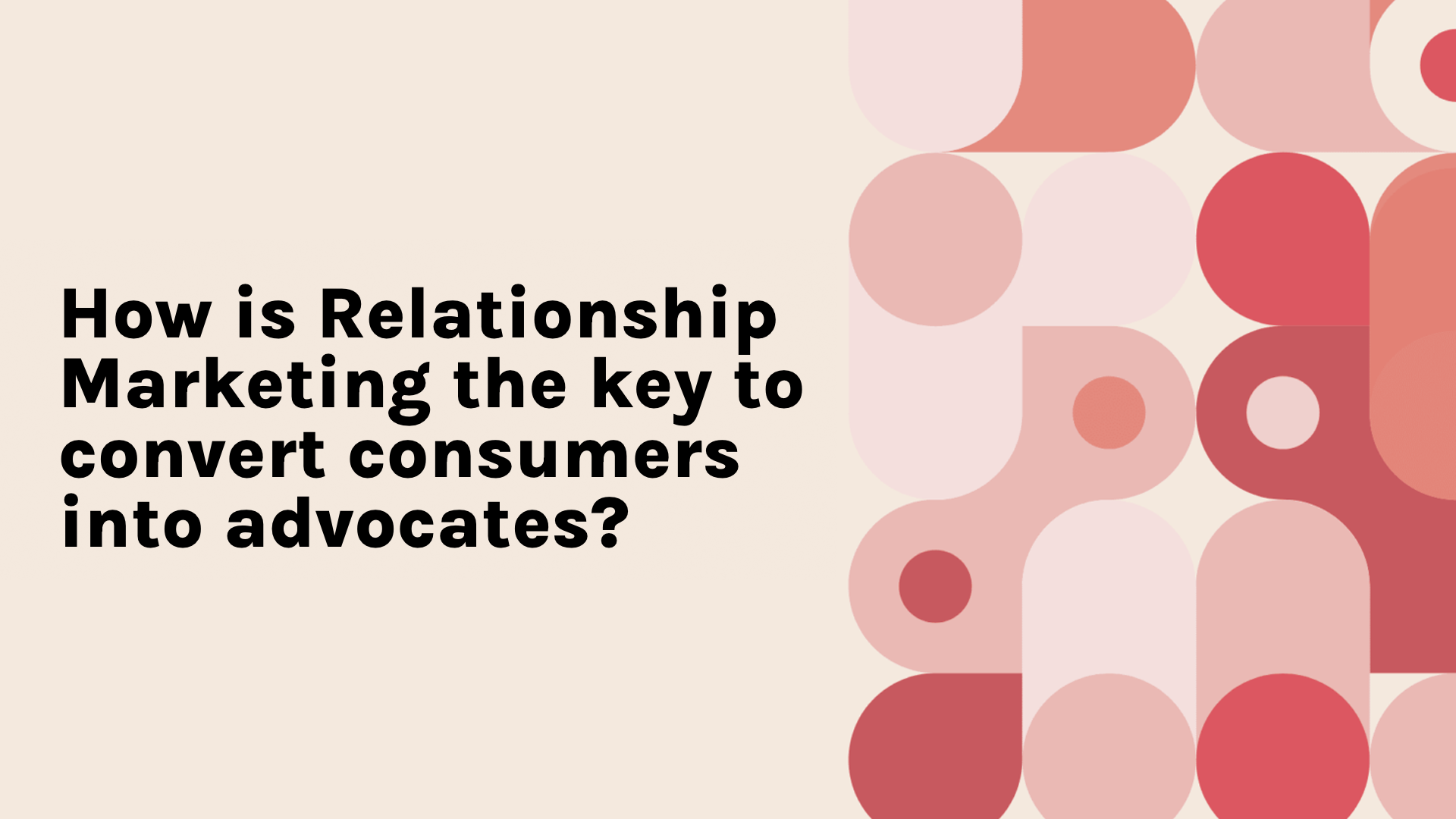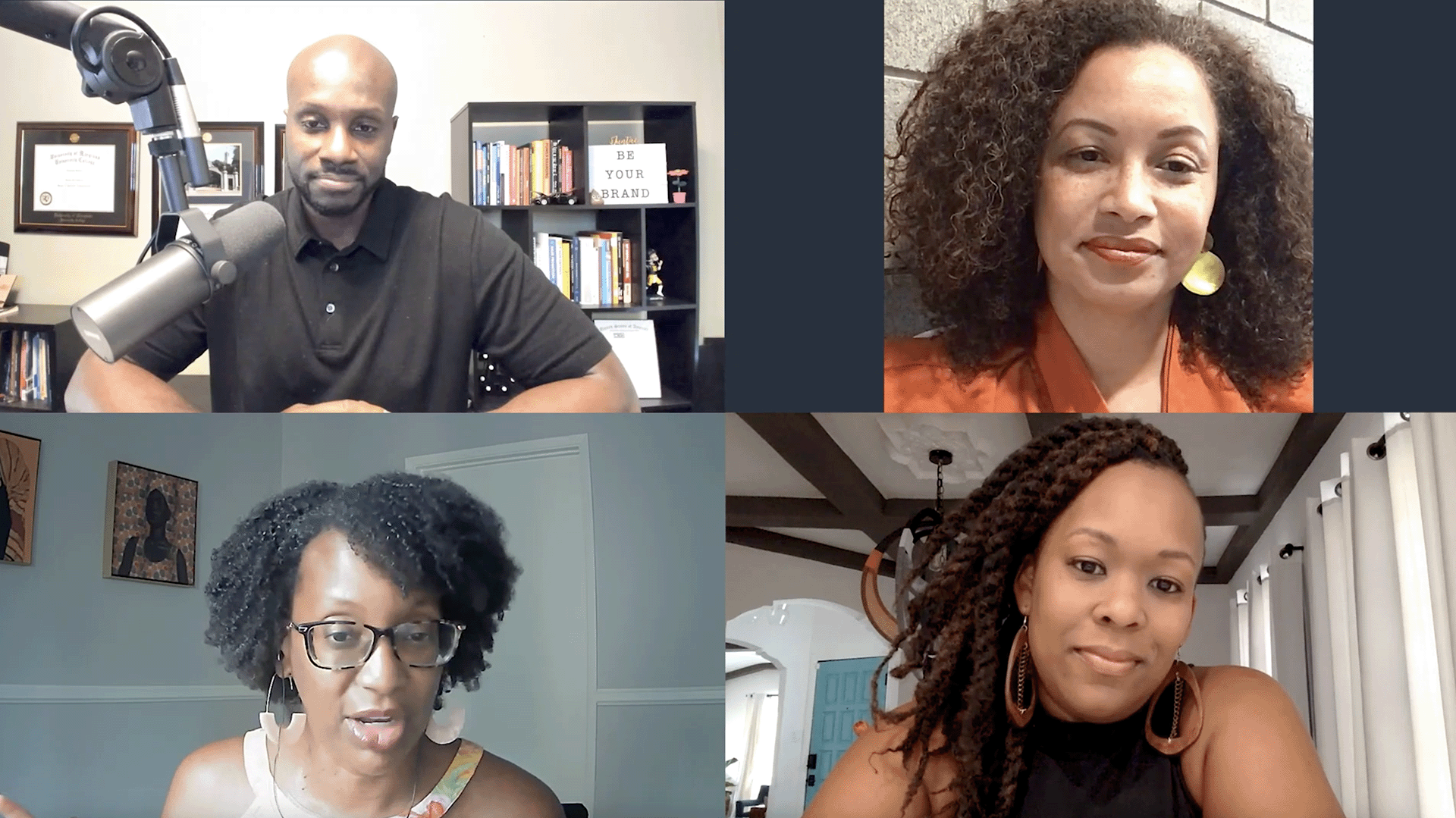What Can You Do with a CDP?
- 0.5
- 1
- 1.25
- 1.5
- 1.75
- 2
Bryan Finfrock: Hello. Thanks for being with us today. My name is Bryan Finfrock with CM Group, Director of Product Marketing and we're happy to have you with us for another session. In today's session, we're going to be discussing what you can do with the CDP. I am joined by David Rob from the CDP Institute and very happy to have you with us here David.
David Rob: My pleasure to be here. Always fun.
Bryan Finfrock: Awesome. Now, earlier in the week on one of our previous sessions, I had a chat with Chris Marriott at Email Connect about the collision of email service provider and customer data platform technology. He was really, really, really favorable on all of the research that you've done on the CDP landscape and which buyers are interested in which technologies across the CDP landscape. But with the overlap of ESP and CDPs and the confusion of the marketplace, that brings up a great question, which is are there some key mistakes that you see brands making when they try to determine if a CDP is right for them?
David Rob: Well, of course at the CDP Institute, we think a CDP is right for everybody. So the only mistake you can make is not to buy a CDP. But putting that aside for a moment, it is of course possible to make mistakes in how you buy the CDP and there are definitely mistakes that people make in that regard. I think that probably the critical one is that they focus on technical use cases. So here's some research that we've done. This is actually a very interesting piece of research. We have an RFP generator on the website and part of the RFP generators to ask people, " Well what do you want to use your CDP for?" Because of course that determines what kind of a CDP you need and what requirements you have. And when you ask people what are your use cases for your CDP, they not surprisingly give you use cases having to do with customer data den resolution, things like that. And that's okay, but you don't make any money on a Denny Resolution. You make money on things like real time interactions and delivering messages. So one thing that people do that's a mistake is that they focus just on the technology and they look for, CDB has great technology, but it doesn't necessarily connect with how they're actually going to use it, the particular application or activation use cases. And what happens with that is that they then buy and don't know what they're going to do with it. And the buying team, which is often people who are MarTech folks and IT folks and who are kind of technical folks, they get all excited about the CDP because it's the greatest thing since slice bread. And then they go over to introduce the product after they've bought it to the users who are the marketers typically. And the marketers look at them like, " What are you talking about? What is this thing that you're telling me I'm supposed to use? I didn't ask for this, I don't know what to do with it." So you get this kind of delay and that is really problematic because it's now they have to go through and reeducate all these folks or educate all these folks about what to do with it. So that's one mistake they make because they focus on the technical, not on the business users. And the other thing that they'll do is they won't look at the benefits. So again, the benefits, your technical benefits. Unified view, that's a benefit but it's what are you going to do with it? How am I going to use it for analysis? How am I going to use it for orchestration? How am I going to use it for message selection if you see? Those are the kind of things that rank second, but those are the things that you really have to ask yourself about. And the other important thing to notice on this particular slide in terms of mistakes is if you look down at the bottom there, you see all the things like less IT reliance, less time, faster reaction, things that are like operational advantages. I'm going to save effort for my IT staff or for my data analysis staff. And they don't focus on those because they're not that exciting and they're cost saving, they're not really making money. But that's often a large part, particularly in the early stages of the benefit you get from the CDP. So they don't pay enough attention to that one either, which causes a little bit of confusion because when they're not looking for those savings, they don't count them in. And then at least in the early stages of the project, people say, " Hey, I'm getting a lot of benefit. We've got this fancy CDP but we're only using it for this one little use case. We're sending out better retargeting emails." And that doesn't really justify the cost. Like well you're actually getting other benefits, you just aren't really keeping track of them. So yeah, there's a number of mistakes that people can make.
Bryan Finfrock: So if you don't sort out what you actually want to do and how to do it early, you can screw up how you set it up and not be able to use it the right way. That makes a lot of sense. Now a lot of analyst reports have come out in the past year that are starting to warn brands and buyers that investing heavily in customer data is like chasing a rainbows. They say there's a point of diminishing return on what you can actually get out of an investment like that. I don't necessarily agree. I think there's really great ways to get value out of customer data if you have a good plan to do so. How do you guide brands to get value from their CDP investment?
David Rob: Well, probably the thing that brands will do wrong, it'll prevent them from getting value from their investment often has to do with that organizational involvement and follows what I was saying. Or if you ask people what's the biggest obstacle in your CDP? Deployment, you find that everybody pretty much agrees it's organizational obstacle. It's not technology. The technology works just fine, but it's getting the people who are supposed to use it to actually get trained on using it and then getting cooperation across the organization. Because many CDP use cases involve multiple departments. The whole value of the CDP is sharing data and every CDP use case involves somehow sharing data between two systems, which is not necessarily between two departments, but it's often between two departments. So if you don't get the organizational alignment that everybody in all the departments involved agrees, then you get bogged down and you don't get much value from the CDP. So we say focus on those organizational issues. And then the second thing that comes out from that is that, and it's closely related when we look at people who got value quickly from their CDPs, which are the blue lines here and people who took longer to get value from the CDP, which are the red lines on this graph, what we find is that the ones who didn't involve the staff people, either the management support or the marketing staff or the tech staff, the ones who ran into problems was not getting cooperation from those people were the ones who really took longer to get their CDP up to speed. Which makes total sense because those are the people who didn't have good requirements, they didn't configure it, they didn't understand their use cases from the start, they didn't know who to train. All those kinds of problems run into, again, not getting that initial organizational involvement and organizational support. So that's why we say is focus on that. Focus on use cases, focus on organization, make sure you know what you're going to do with it, make sure the people who are supposed to use it are actually interested in using it and they know what they're going to do with it sooner rather than later. And then you're going to get value. But if you skip over that step and you just focus on the technology, it's going to be longer haul.
Bryan Finfrock: That makes a lot of sense. I spent a lot of years building campaigns in a services role for a wide variety of brands in multiple industries. And I can tell you that the biggest hurdle we ever ran into with any project work that we were doing was getting the right data to actually do what we wanted to do. And sometimes that's just need a promotional campaign to go out so you have to get that list cut and sent over and then scrubbed and patterned and all the relationships across the database so that you get the personalization. And it shouldn't take as much time as it does, but it does. It takes a lot of times. It should be easy to get all of these teams working together. So the data team doesn't want to be getting random requests from everyone all the time to hey set up this one off API that's throwing this data over to this system and then that system. That's difficult. What use cases do you frequently encounter that achieve the goal of activating data and simplifying that data even to really gain value from a customer interaction?
David Rob: And again, you're absolutely hitting the nail on the head. It's all about activating the data. That's what the CDP makes easy because instead of all these one off ad hoc projects that you start afresh with every new campaign or every new idea that somebody has for even an analysis, the CDP provides this sort of pre- built, ready to go consistent, reliable, vetted, updated data source that you can then use as the base for your work. So then selecting a list is really just a matter of opening it up, looking at the data, picking what you need and you're good to go. Not having to spend a lot of time assembling that data before you can do that. So when we look at activation use cases, and this is again coming from that RFP generator, so this is live data, what actual human beings or possibly bots have told us that they're going to use their CDP for. And the most common things are not really terribly surprising common things, but starting with analytics because that's the first thing you do is you analyze your data. I'm getting this unified customer data I never had in one place before. So the analysts of course get very excited and they're a pretty pragmatic bunch so it's tough to get analyst excited but they get excited about this because like, " Wow, I never had, this is a new toy for me to play with." Journey analytics, identifying, uncovering customer segments, identifying customer behavior. Those are all really the top kinds of analytical activations that people do and you get insights from those. You don't get better revenue just because you do better behavior analysis but you get better revenue because you take that behavior analysis and it gives you an idea and say, " Hey, wow. Customers are doing this, what if I had a new message at this point in their life cycle to get them to do that instead so they're not dropping out at this particular point," or whatever the behavior is that sparks some clever idea. And the next thing they do after they've done their analysis is now they're using that data for predictive analytics. Okay. Recommendations look alike models, churn predictions, best offer selection, all those kinds of things that are used to actually now do predictions about who's going to do what so I can find the best customers for a particular situation or make the best offer for a particular customer, customer given their situation. That's all these predictive things. And again, it becomes way easier when you have a nice clean set of data that you can work from as a base and that it's updated all the time, even in real time, which a CDP should be able to do so that you can update your recommendations as a transaction's taking place as they're on the website, as they're talking to the call center agent. The next thing after that is looking at the outbound campaigns, actually generating the list. So selecting personalized messages, the right message for the rights person. Sending out trigger messages. Somebody has a drop shopping cart, it's the classic trigger message you want to send something right after that. Selecting emails not a very sexy activity but one that is super important and of course if you do it right, you make a lot more money than if you do it wrong. And again you can also save some time doing it with the CDP rather than doing it as a whole collection of one- off projects where you start from scratch each time. And then finally you get to the most sophisticated on this list, which is real time interactions. So again, recommending content while they're on the website, profiling people, watching what they're doing on the website as they interact or in the call centers, they interact so you can decide what to do next based on that fresh information. Doing cross sell and upsell again during interactions so you can make the best offers. So those are the key activation use cases. Again, these are the most common ones that people site when they use the RFP generator and those are fairly consistent lists with other research you might do. So there's nothing peculiar. It is a good starter set.
Bryan Finfrock: Yeah. It makes a lot of sense. I think the very first abandoned cart that I ever set up for a company, we did it in three phases and phase one was let's create the batch and every day we'll send out the batch blast first thing in the morning to anybody who abandoned something yesterday. And of course it produces revenue, it reminds people to go back and buy something they might have forgotten. But the next step of that, and this is probably nine or 10 years ago, was a cookie based abandoned cart. It worked at the time and you could trigger that message to happen 15, 30, 45 minutes after the cart was abandoned. But stage two was testing that, is it actually going to scare our customers away if we're responding quickly is, they're going to be like, " Oh no, they're spying on me or are they actually..." And it turned out that we did a 90/ 10 split, 90% got the batch, 10% got a real time and were pulled out of the next batch. We didn't get to the next day in the test to actually do a follow up evaluation because on the first day of the test the 10% produced more revenue than 90%. So they just said turn a switch, turn everything over. We're putting everything else on these rapid retargeting setups. And when you take that to the next level, which is a platform based trigger, you're not just responding to that simple thing that they abandoned. You actually have the opportunity to evaluate quickly and like you mentioned, throw some intelligence at it. Pick a best offer to go along with what was abandoned so that you're not just nudging them to finish a purchase, you're actually trying to help them solve a problem that they may have. And when you have an opportunity to do that, you can really turn the revenue up. But I think doing something like that takes a lot of planning and you really should plan out all the different use cases that you might try and get value from and even compare that perhaps to some of the other things that you're already doing. Am I going to change this or am I going to do something new? Is it going to be a lift and drop or is this going to be a new method to deliver an experience to the customer. So it's not just a single message, it's two or three or four that makes sense and are logical but personalized to each person rather than the batch fed through the journey. Is it fair to say that you have to really dig in and do that planning and map out all those different use cases and figure out even what you might want to get out of intelligent decisioning and the early stages before you even decide on a vendor and start standing things up?
David Rob: You do have to plan it all out because you have to know what functionality you want. And the thing that I like about your example is you were actually testing. So it wasn't just oh I have this cool idea, let's go for it. You're actually looking at the results and there again testing us all dependent on getting the right data and getting that data available easily and quickly to your example about finding out immediately that 10% was outperforming the rest. So you need that data flow to be happening really to be automated. That's the key to it, can't be manual. So that's what the CDP is going to do for you is it's going to make that data accessible to read your test results, it's going to make it quickly available. And it's funny you mentioned retargeting because that is one of the classic use cases for CDP is that you get the data from the purchases very quickly because there's nothing more annoying, you do a drop shopping cart, you come back a few minutes later, you buy the product or maybe even buy it through a different channel. You were looking at it on your desktop and you buy it on your phone and then the next day you get an offer for that same product and I need to get off for that same product with the discount because they're trying to do something to you. So that happens because it takes so long to get the purchase history back into the retargeting system to know who to suppress. But with the CDP in place, if you set it up like that should be more or less of a real time connection between the two systems, so you can block those people out before that retargeting message comes out and annoys them. That's absolutely critical benefit that you get and you can do it consistently. And as you say, you can also do it such that the author that does go out is based not simply on the product that they looked at but on their entire history, which the CDP handling makes available.
Bryan Finfrock: And CDP also give you access, easier access perhaps even to going beyond the traditional channels like email to deliver the message you want to deliver. If you knew they were browsing on an app instead of on the web and they still abandon the cart, you don't want to send them an email to say hey you abandoned it. You want to try with the push, you want to make sure it's a connected and consistent experience. I think that's another real great advantage to the CDP over the traditional messaging solutions that are in the market is that you're really getting that real time, that smooth transition from experience to experience and it's consistent for each individual. So you don't have as many of the communication hiccups that you might wish slow data.
David Rob: Yeah. No absolutely.
Bryan Finfrock: What advice do you have for viewers on the next steps if they're in the early stages trying to learn more about CDPs or even considering investing in one soon?
David Rob: Well, I think the next step really it again comes back to that organizational engagement. And maybe I'm obsessed with that or seem to be obsessed with that, but it's really because everything that we've ever seen in our research in other research says that's really the place you have to focus is make sure you start out by engaging the people who are going to use this system. Understand what their pain points are, understand what the things are that they can't do. That's the key question. What can't you do today that you could do if you could connect to systems that aren't connected today? And the what's important to you among those, because some of those things will be not that useful. It's easy to generate the list. Marketers creative folks, they can sit on a whiteboard and they can call up a list of 20 things they'd love to do that. That's never hard to do. But then which of those are really worth doing? And which of those could be solved by a CDP? Which of those are not doable because your data isn't being shared? So once you get that really list of use cases that are of high value, that CDP can actually solve and that people in your organization accept it are important, then you can go on and begin to execute against that and find the right tool and set up the right systems and connect the right data and do all the things that you need to execute on those ideas and get the right people trained and get the right buy in across the organization. All those other things as well that are not technical. Those are the things you all have to line up. There's a lot of ducks you have to line up but once you get them lined up, you have a delicious duck stew or whatever it is you do once you line up your ducks. I'm actually not too sure how you do with lined up ducks, but apparently it's important.
Bryan Finfrock: Yeah. I think one of the key elements of the research that you've done that we haven't actually mentioned yet, but Chris and I talked about was the difference in interest in a type of CDP because you find that IT teams tend to be interested in a different type of CDP than the marketing teams. And one thing that Chris and I chatted about was it's really important for both of those teams to be working together and with other teams as well. Because when you're talking about a solution that has intelligence and is leveraging machine learning, you want to program that to solve customers problems, not just to cleanly organize customer data and you want everybody invested so you have the opportunity to make it more emotional, more contextual and valuable for the customer. What are your thoughts on that? How do you see the differences and interests between the IT and marketing team and how do you encourage them to do that? Bring it all together so everybody's on the same page because I think that's really key.
David Rob: That is a challenge depending on the organization. Some organizations, IT and marketing really fight with each other a lot. Let's just be put it in plain English. Other organizations, they actually cooperate pretty well. So there's no one answer to that question that fits all. When they do tend to fight, it's usually because IT has many other priorities. And if you look at most surveys of IT people, security, reliability, access, cost, those are the kinds of things that really keep IT folks up at night. As well they should because if you don't have those things and nothing else really matters. Marketers take that for granted, which is not quite fair, but life is unfair and they want the IT folks to focus on better customer experience and giving me more data for personalization and making the integration smoother and basically letting me do my job better and get absolutely nothing wrong with that. That's what they should care about. But if the two groups are not really aligned, then you're going to have this kind of conflict and it plays out in the CDP too. The IT group often will look at it and say, " Hey, this CDP thing is just a database. We already have a data warehouse. Why do you guys want to buy what looks to me like you had another data warehouse?" And there are lots of answers to that question. Again, depending on the organization, because if the data warehouse you have really has all the data the marketers need and just for some reason they haven't been granted access to it, then maybe you just need some data access tools and you're good to go and forget about the CDP. More likely, even though you have a data warehouse, it was built for a different purpose. Often data warehouses are built for financial analysis or maybe even product analysis and it doesn't have the customer data in there and it doesn't have the customer data unified into unified customer profiles. So it's missing a lot of key things that the marketers really need to get use from that. So you have to go over that at that second level of detail. Not just, yeah, we have a data warehouse here but what's in the data warehouse and what do I need from my use cases, coming back yet again to my use cases to solve my problem? Can the data warehouse do this? Can it do that? Can it do the other thing? And IT guys, they're on your side. May not feel that way all the time. They're like, " You're right, we can't do that." Well, we could set up a project to do it, but we have a lot of other work on our plate and if there's this CDP thing that'll make that way easier or better still have a vendor set it up, and we just have to make sure that they're not going to violate the security and take care of the things that we know that we are responsible for. Many IT departments will say, " Okay, yeah. You convinced me. That's fine." The other thing that it does, and again totally as they should is they look at the corporation's needs. So marketers have this thing called a CDP. Well, the customer support guys have data needs, the operational teams have data needs, the sales teams have data needs. So IT people are the one who get the request for all these things. So they say, " You want this thing from marketing, but I have all these other departments, they're actually asking for pretty much the same data." So maybe this should be a corporate solution and maybe it's still a purchase CDP or maybe it's something that I do need to build because the purchase CDPs don't do what I need. But either way they're aware and you have to be aware of all those requirements. See, it can't be an emotional decision. It can't be, I'm smart and not or you don't take care of me and I don't trust you. Which again, unfortunately is often a contentious relationship. It's got to be kind of like just, okay, we're all on the same team here. Let's look at what's best for the company and then hopefully you'll find an answer that is truly best for the company. And it's not to say there aren't politics, but hopefully that's just one aspect of it is the politics and the other aspects let you make rational decisions.
Bryan Finfrock: And that goes back to what we were talking about earlier, the hurdles to getting the next project stood up versus the pivot to having a platform that's accessible. And I think you've really hit the nail on the head. It needs to be able to activate across more than just marketing channels. That data does need to be available so when services folks are picking things up, they can understand what the customer may have been looking at, what the customer may have a problem with to help solve that problem. And even beyond that, it's really useful if a service person can send a message back to the CDP that says this customer's not happy right now. Don't send them marketing for a couple of weeks and put them in this different channel to resolve it. So call centers and chat bots and all sorts of other things that play in the marketplace absolutely do have an influence. I agree with you, there's many, many marketers that are thinking about specific channel use cases they have and not considering all the use cases that the rest of the customer experience team really needs to resolve. So it's great stuff. Anything else you'd like to say? Tell folks how they can reach out to you and get some help if they are considering an RFP and would like some assistance in that process.
David Rob: Okay. Well, I'm a formed consultant. I don't write RFPs anymore, but there is an RFP generator that you can use to of create a starting point and that's a wwwcdpinstitute. org, which is tattooed in a spot I can't really show you here. So they should go to that wwwcdpinstitute. org, which has a huge library of papers and tools like the RFP generator and a use case generator and lots of other cool stuff that help people to understand and make better decisions about CDPs. And actually also has a directory of consultants if you want somebody to help you to write that RFP or do anything else related to CDP world.
Bryan Finfrock: Fantastic. Well, thank you so much for being with us here today. I hope all of our viewers got a lot of great value out of what we discussed and we're looking forward to talking to you again soon.
David Rob: My pleasure. Always good to chat, Bryan.
Bryan Finfrock: Have a great day.
David Rob: You too.
DESCRIPTION
The CDP Institute was founded in 2016 but the idea was born when David Raab noticed a number of new marketing applications that included features to assemble a unified customer database from multiple sources.
Fast forward til today and Customer Data Platforms have taken on a slew of different meanings. But what can they provide, specifically beyond just being data warehouses?
Bryan Finfrock, Product Marketing at CM Group, joins CDP Institute founder David Raab to discuss, and also define what a 'true CDP' means.
Today's Guests

Bryan Finfrock


